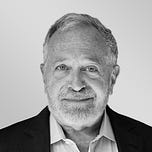When I was a young teenager near the middle of the last century, I asked the high school librarian if I could borrow J.D. Salinger’s The Catcher in the Rye. Why did I want to read it? she asked. I lied and told her my parents told me it was excellent literature.
The real reason I wanted to read The Catcher in the Rye was it had been banned from the library. I knew the librarian kept one copy behind her desk, and I was determined to get it. She reluctantly handed it to me. I read it voraciously.
There’s no better way to get a teenager to read a book than to ban it.
Which is why it was so clever of the McMinn County, Tennessee, school board to vote to remove Maus from its eighth grade curriculum. Maus is a Pulitzer-winning graphic novel by Art Spiegelman that conveys the horrors of the Holocaust in cartoon form. The board cited “objectionable language” and nudity.
Before the board made its decision, teenagers in McMinn County probably weren’t particularly eager to read about the Holocaust, even in the form of a graphic novel. But now that Maus has been banned for objectionable language and nudity, I bet they’re wildly trading whatever threadbare copies they can get their hands on.
Since it was banned, half the teenagers in America seem to have bought Maus (or insisted their parents do). Two weeks ago, the book wasn’t even in the top 1,000 of Amazon’s bestseller list. Now it’s number 1.
Way to go, McMinn County school board! Get teenagers all over America excited to read about the Holocaust!
Even the McMinn County school board has been outdone by the Matanuska-Susitna school board in Palmer, Alaska, which clearly had a more serious problem on its hands than getting teenagers excited to read about the Holocaust. It couldn’t even get them to read the great novels of American literature.
So the Matanuska-Susitna school board voted 5 to 2 to ban Invisible Man by Ralph Ellison, Catch-22 by Joseph Heller, The Things They Carried by Tim O’Brien, I Know Why the Caged Bird Sings by Maya Angelou, and The Great Gatsby by F. Scott Fitzgerald.
Brilliant! I bet nearly every teenager in Palmer, Alaska is now deep into these books. They’re probably having intense discussions about them online late at night, away from their parents and other snooping adults. “Why do you think Ellison called himself ‘invisible?’” “How did Angelou come up with those amazing metaphors?” “Why did Daisy Buchanan reject Jay Gatsby?” “Wait! Shhh! Gotta go! My parents are right outside my room! Call back in 20 minutes!”
The Great Gatsby was required reading when I went to high school. I admit I never read it. Had it been banned, I probably would have devoured it.
Beginning last fall, at least 16 school districts in a half-dozen states have demanded school libraries ban Out of Darkness. It’s a young adult novel about a love affair between two teenagers, a Mexican American girl and Black boy, set against the backdrop of the 1937 natural gas explosion at a New London, Texas plant that claimed nearly 300 lives. The book received lots of favorable reviews and literary rewards, but only a handful of teenagers read before it was banned. Now, it’s hot.
It’s the cleverest marketing strategy I’ve ever seen. Publishers must be clamoring to have school districts ban their books. (Why haven’t my books been banned, dammit?)
An influential group called “No Left Turn” is partly responsible. Just take a look at their website of books “used to spread radical and racist ideologies to students.” You can bet teenagers across America are now lining up to read them.














Share this post